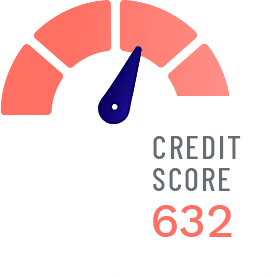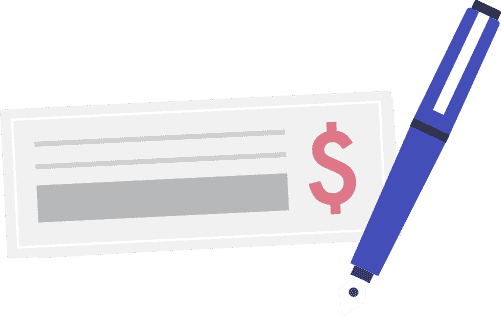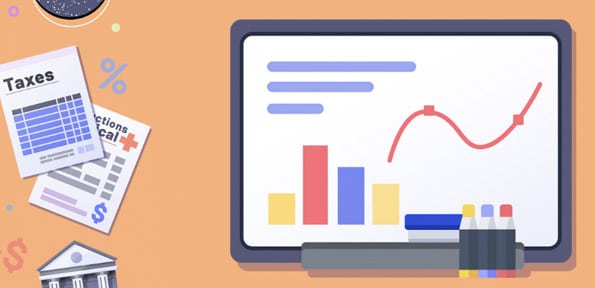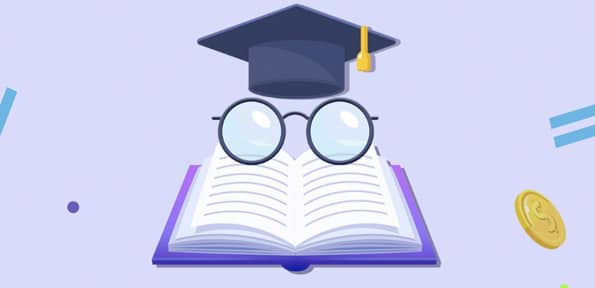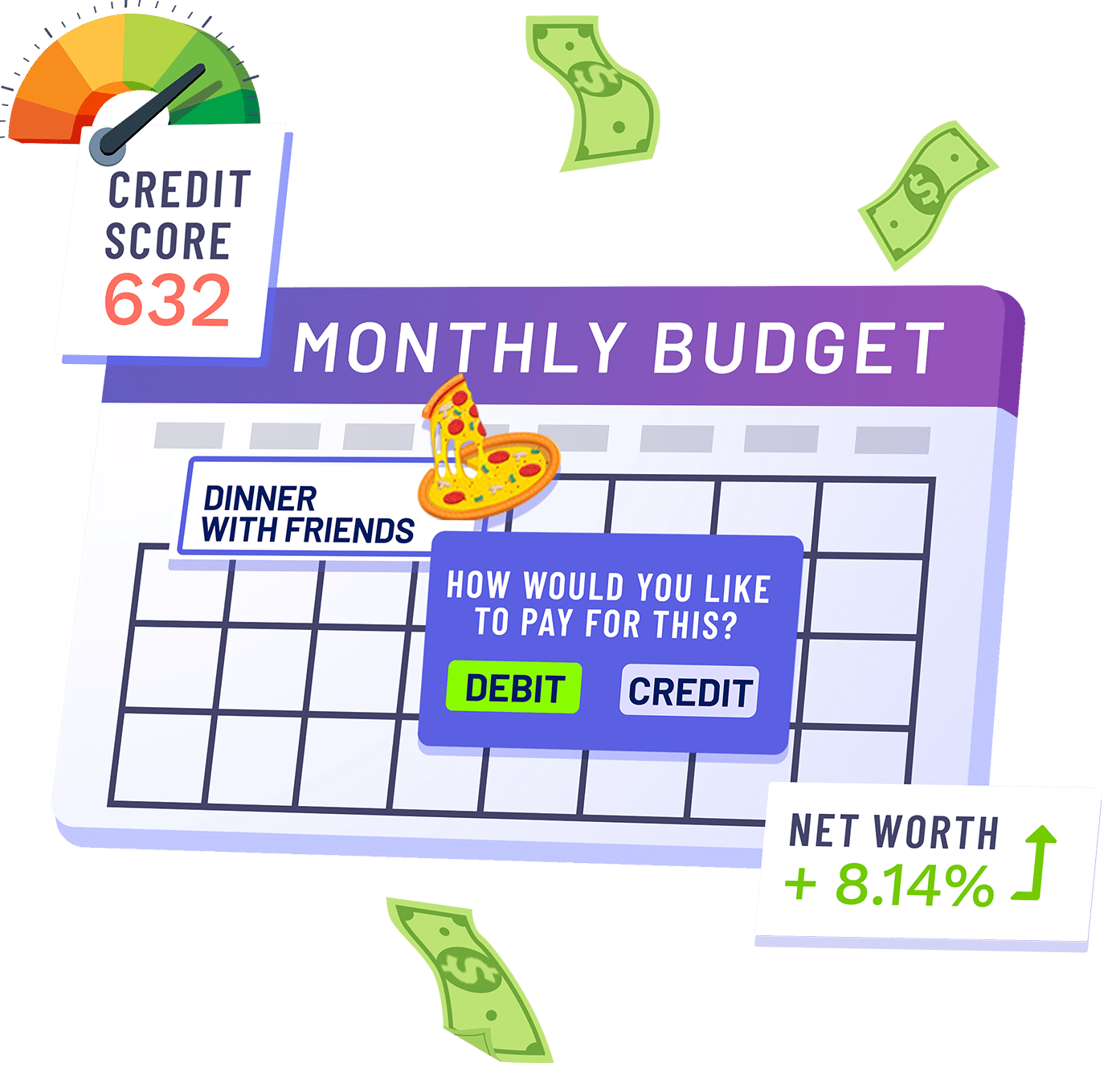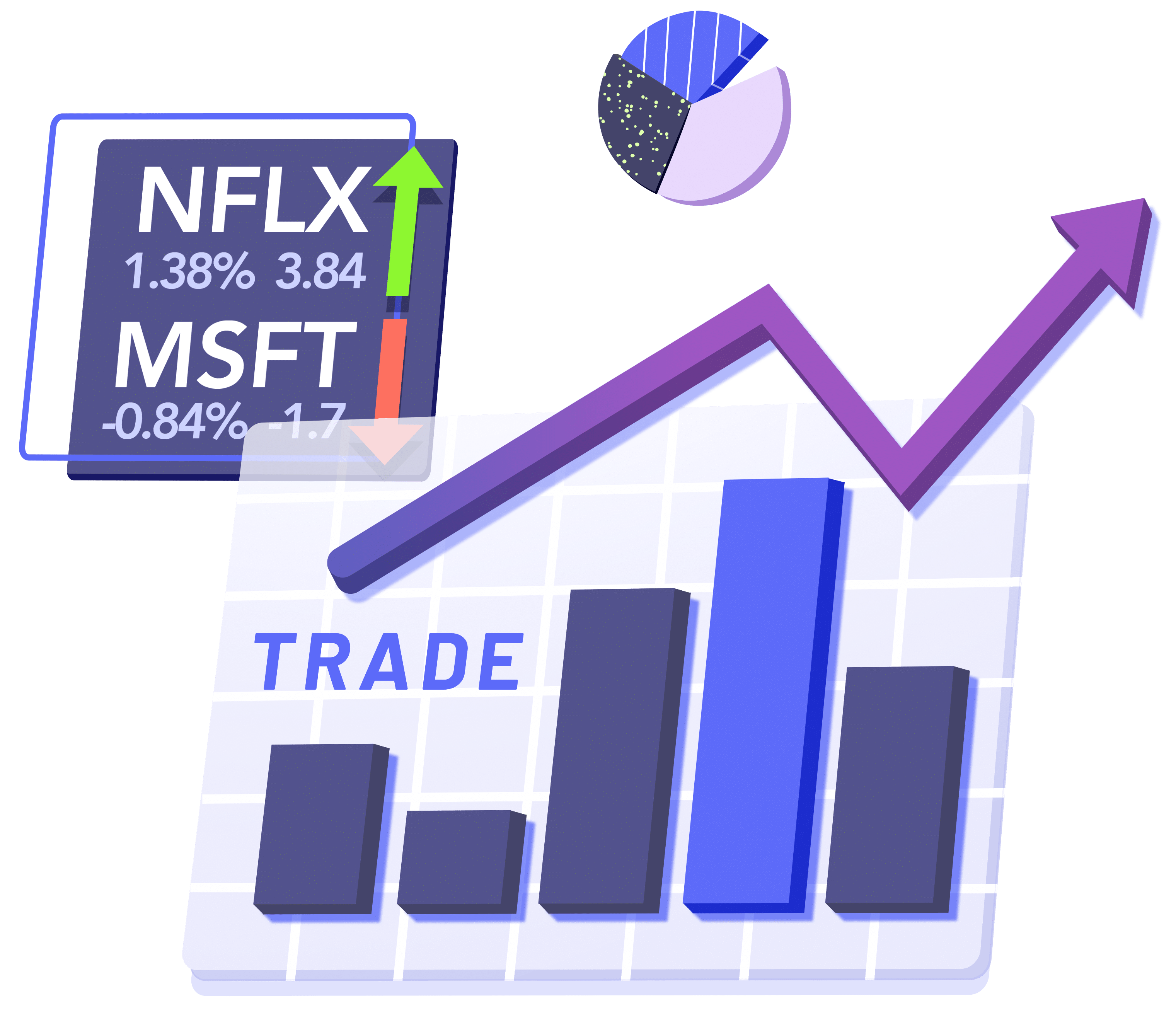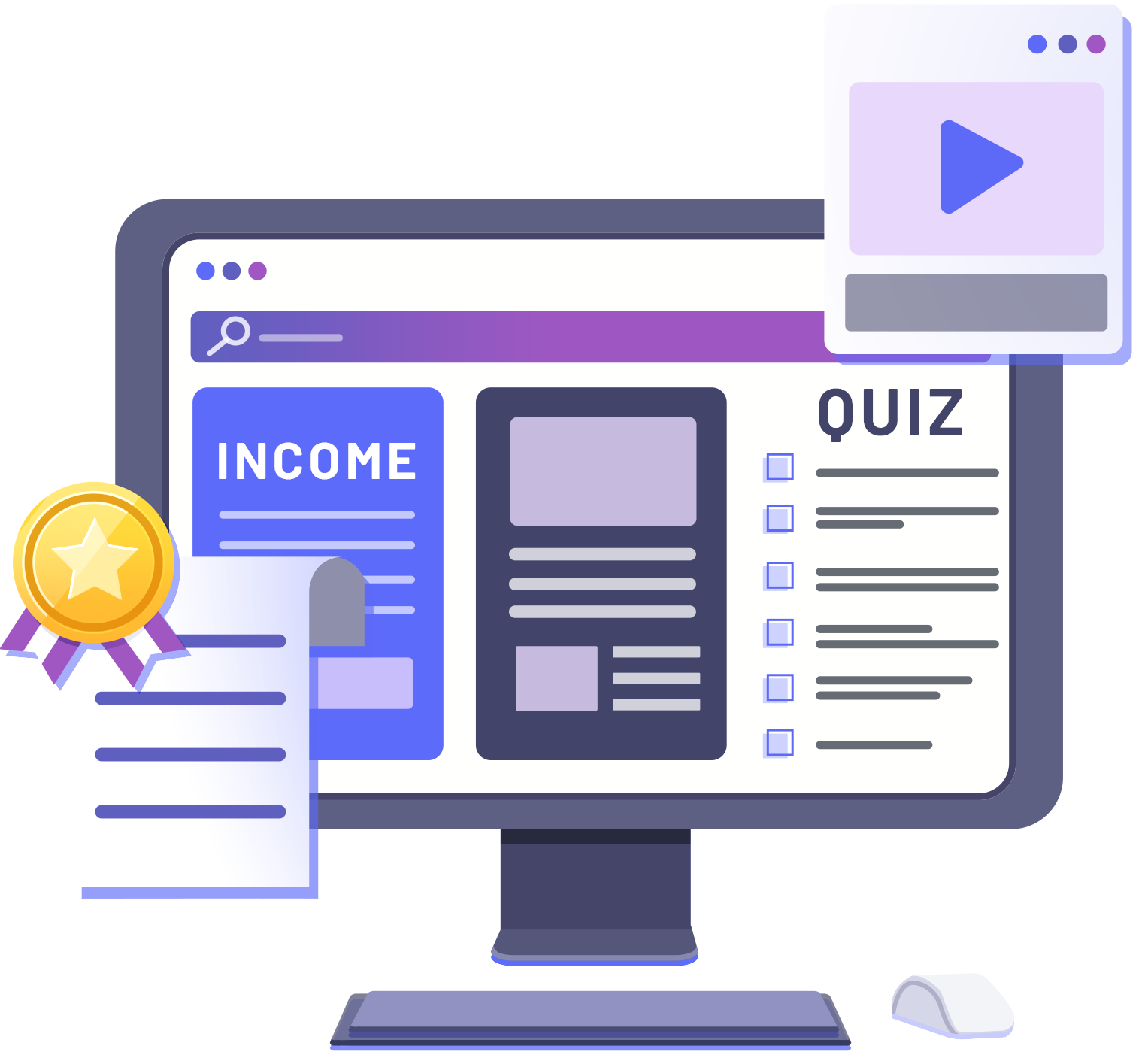| Fundamentals of Economic Decision-Making |
|
|
|
|
|
|
| Explain that scarcity is a basic, permanent condition that exists because unlimited wants exceed limited productive resources. |
Lesson – Why is there Scarcity? | | | | | |
| Compare and contrast strategies for allocating scarce resources such as by price, majority rule, contests, force, sharing, lottery, authority, first-come-first-served, and personal characteristics. | Lesson – What is Economics? | | | | | |
| Define and give examples of productive resources (i.e. factors of production): natural resources (i.e. land), human resources (i.e. labor and human capital), physical capital and entrepreneurship. | Lesson – Labor and ProductivityLesson – International tradeLesson – Comparative Advantage | | | | | |
| Apply the concept of opportunity cost (the forgone next best alternative) to personal choices, as well as business and government decisions. | Lesson – What is Opportunity Cost? | | | | | |
| Explain that rational decisions occur when the marginal benefits of an action equal or
exceed the marginal costs. | Lesson – Marginal Benefit and Cost | | | | | |
| Explain that individuals, businesses, and governments respond to positive and negative incentives in predictable ways. | Lesson – What are Incentives? | | | | | |
| Analyze how command, market and mixed economic systems answer the three basic economic questions (what to produce, how to produce, and for whom to produce) to prioritize various social and economic goals such as freedom, security, equity, growth, efficiency, price stability, full employment, and sustainability. | Lesson – Comparative Economic Systems – Capitalism, Socialism, and Communism | | | | | |
| Compare the roles of government in different economic systems with regards to providing public goods and services, redistributing income, protecting property rights, resolving market failures, regulation and providing consumer protections. | Lesson – Comparative Economic Systems – Capitalism, Socialism, and Communism | | | | | |
| Explain how investments in human capital (e.g., education, job training, and healthcare) can lead to a higher standard of living. | Lesson – What is Specialization?Lesson – Labor and ProductivityLesson – Comparative Advantage | | | | | |
| Explain how investment in equipment and technology can lead to economic growth. | Lesson – What is Economic Growth?Lesson – Benefits of CompetitionLesson – Comparative Advantage | | | | | |
| Explain how individuals, businesses, and governments benefit from specialization and voluntary, non-fraudulent trade. | Lesson – Property RightsLesson – International TradeLesson – What is Specialization? | | | | | |
| Illustrate economic growth using a production possibilities curve. | Lesson – What is Economic Growth? | | | | | |
| Personal Finance |
Activity |
Long-Term Game |
Comprehensive Chapter |
Short Lesson |
Interactive Calculator |
Graded Assessment |
| Apply a rational decision-making model to evaluate the costs and benefits of post-high school life choices (i.e., college, technical school, military enlistment, workforce participation, or other option). | Lesson – Work VS StudyLesson – Starting a BusinessLesson – Planning Long Term PurchasesLesson – How To Choose an Internship | | | | | |
| Evaluate costs and benefits of various ways to pay for post-high school life including scholarships, the HOPE scholarship, employment, work-study programs, loans, grants, savings, prior investments, and other options. | Lesson – Student LoansLesson – Work VS Study | | | | | |
| Identify necessary documents needed to complete forms like the FAFSA or scholarship applications. | Lesson – Student LoansLesson – Good Debt, Bad Debt | | | | | |
| Apply a rational decision-making model to evaluate other major life choices like employment opportunities, renting a home vs. buying, selecting a mortgage, and buying a car. | Activity – Use the Buy vs Lease CalculatorActivity – Use the Home Budgeting CalculatorActivity – Use the Car Loans CalculatorLesson – MortgagesLesson – Good Debt, Bad DebtLesson – Buying a CarLesson – Planning Long Term Purchases | | | | | |
| Describe how individual financial decisions can help create generational wealth. | Lesson – What is Wealth?Lesson – Pay Yourself FirstLesson – Preparing for RetirementLesson – Family Planning | | | | | |
| Compare different types of income including hourly wages, salary, tips, independent contractor services (Form 1099), dividends, and capital gains. | Lesson – Income and CompensationLesson – Building Wealth | | | | | |
| Review and complete a sample federal individual income tax form 1040. | Lesson – Tax Filing and the Form 1040 | | | | | |
| Describe the basic components of a paystub including gross pay, net pay, and common deductions (i.e. federal and state income tax, Federal Insurance Contributions Act (FICA which includes Social Security and Medicare), and elective deductions like 401K, insurance and tax-deferred savings). | Budget Game – Core ComponentLesson – Income and Compensation | | | | | |
| Analyze the basic components of a personal budget including income, expenses (fixed and variable), and the importance of short-term and long-term savings. | Budget Game – Core ComponentLesson – BudgetingLesson – Spending and Savings Plans | | | | | |
| Explain how to reconcile a checking account, either online or on paper, including how to account for transactions that have not been posted (i.e. checks, weekend debit card transactions, or monthly auto-pay transactions) and how this helps avoid overdraft fees. | Lesson – Reconciling accountsLesson – Debit CardsLesson – What is Money? | | | | | |
| Describe how to determine a person’s net worth. | Budget Game – Core ComponentActivity – Use the Net Worth Calculator | | | | | |
| Explain the roles/functions of money as a medium of exchange, store of value, and unit of account/standard of value. | Lesson – What is Money? | | | | | |
| Compare services offered by different financial institutions, including banks, credit unions, payday lenders, and title pawn lenders. | Lesson – Banks, Credit Unions, and Savings and LoansLesson – Short-Term Financing | | | | | |
| Compare and contrast cash, debit cards, credit cards, prepaid cards and mobile payment apps in terms of how they work, acceptability, and the costs and benefits associated with each. | Budget Game – Core ComponentLesson – Debit CardsLesson – Credit CardsLesson – What is Money? | | | | | |
| Evaluate the risk and return of a variety of savings and investment options, including: savings accounts, certificates of deposit, retirement accounts (i.e. Roth IRA, 401K, 403b), stocks, bonds, 529 accounts, and mutual funds and explain the importance of diversification when investing. | Lesson – Preparing for RetirementLesson – Investing StrategiesLesson – What is a Stock?Lesson – What is a Mutual Fund?Lesson – What is an ETF?Lesson – What are Bonds | | | | | |
| Describe the role of speculative investments (i.e. cryptocurrency and historical examples like buying on margin in the 1920’s). | Investing101 CertificationLesson – Stock Market Crash of 1929 | | | | | |
| Compare interest rates on loans and credit cards from different institutions including banks, credit unions, pay-day loan facilities, and title-pawn companies. | Lesson – Short-Term FinancingLesson – Good Debt, Bad Debt | | | | | |
| Define annual percentage rate and describe how different interest rates can affect monthly payments on loans. | Lesson – The Importance of Interest Rates | | | | | |
| Use an online amortization tool to show how payments on a fixed loan like a mortgage are applied to interest and principal. | Activity – Use the Compound Interest CalculatorActivity – Use the Home Budgeting Calculator | | | | | |
| Explain the difference between simple and compound interest and the difference between fixed and variable interest. | Activity – Use the Compound Interest CalculatorLesson – Using CreditLesson – The Importance of Interest Rates | | | | | |
| Define nominal and real returns and explain how inflation affects interest-earning savings and investment accounts. | Lesson – The Importance of Interest RatesLesson – Inflation | | | | | |
| Describe income, sales, property, capital gains, and estate taxes in the U.S. | Lesson – Taxation Overview | | | | | |
| Describe the difference between progressive, regressive, and proportional taxes. | Lesson – Taxation Overview | | | | | |
| Differentiate between and explain how to access one’s credit report and credit score. | Lesson – Credit Reports | | | | | |
| Describe the basic components of a credit score including payment history, debt to income ratio, amount owed, length of credit history, types of credit used, amount of available credit, and recent credit applications. | Lesson – Credit Reports | | | | | |
| Analyze and evaluate a sample loan application for credit worthiness and the ability to receive favorable interest rates. | Lesson – Using CreditLesson – Short-Term Financing | | | | | |
| Explain the difference between revolving credit and installment credit. | Lesson – Managing DebtLesson – Consolidating DebtLesson – Debt Negotiation | | | | | |
| Explain causes of personal bankruptcy and describe consequences of declaring bankruptcy. | Lesson – Banktrupcy | | | | | |
| Explain why people buy insurance. | Lesson – Life InsuranceLesson – Renter’s InsuranceLesson – Home Owner’s InsuranceLesson – Car InsuranceLesson – Health Insurance | | | | | |
| Describe various types of insurance such as automobile, health, life (whole and term),
disability, renters, flood and property. | Lesson – Life InsuranceLesson – Renter’s InsuranceLesson – Home Owner’s InsuranceLesson – Car InsuranceLesson – Health Insurance | | | | | |
| Explain the costs and benefits associated with different types of insurance, including deductibles, premiums, coverage limits shared liability, and asset protection | Lesson – Life InsuranceLesson – Renter’s InsuranceLesson – Home Owner’s InsuranceLesson – Car InsuranceLesson – Health Insurance | | | | | |
| Define insurability and explain why insurance rates can vary. | Lesson – Life InsuranceLesson – Renter’s InsuranceLesson – Home Owner’s InsuranceLesson – Car InsuranceLesson – Health Insurance | | | | | |
| Identify skills that are required to be successful in the workplace, including positive work ethic, punctuality, time management, teamwork, and communication skills. | Lesson – Career DevelopmentLesson – Work VS StudyLesson – How To Choose an Internship | | | | | |
| Describe the impact a person’s social media footprint can have on their career and finances. | Lesson – Using Keywords In Your ResumeLesson – Acing Job InterviewsLesson – Biggest Mistakes of Job Seekers | | | | | |
| Evaluate job and career options and explain the significance of investment in education, training, and skill development as it relates to future earnings. | Lesson – Career DevelopmentLesson – Work VS StudyLesson – How To Choose an InternshipLesson – Student Loans | | | | | |
| Describe how government agencies offer protection in banking, investments, borrowing, and buying goods and services. | Lesson – Banks, Credit Unions, and Savings and LoansLesson – Credit Cards | | | | | |
| Compare different methods for lodging consumer complaints (e.g., Better Business Bureau, online methods, and direct contact with business). | Lesson – Consumer rights and responsibilities | | | | | |
| Explain the primary purpose of important consumer legislation (i.e., the Truth in Lending Act, Fair Debt Collection Practices Act, Fair Credit Reporting Act, the Equal Housing Act, and the Dodd-Frank Act). | Lesson – Credit Cards | | | | | |
| Describe common ways identity theft happens including dumpster diving, skimming, phishing, stealing, and data breaches. | Lesson – Protecting Against Fraud | | | | | |
| Describe ways to protect yourself from identity theft including shredding important documents, not opening attachments to unknown emails, not revealing personal information over the phone or email, using secure networks, regularly monitoring your credit report, changing passwords on accounts, and carefully managing social media. | Lesson – Protecting Against FraudLesson – Financial Records and Receipts | | | | | |
| Describe steps that should be taken if a person is the victim of identity theft including getting replacement credit cards, freezing credit histories, alerting appropriate officials, and changing passwords. | Lesson – Protecting Against Fraud | | | | | |
| Describe the basic characteristics of investment scams such as Ponzi schemes, pump and dumps, and “advance fee” scams and how to avoid them. | Investing101 Certification | | | | | |
| Microeconomics |
Activity |
Long-Term Game |
Comprehensive Chapter |
Short Lesson |
Interactive Calculator |
Graded Assessment |
| Define the law of supply and the law of demand. | Lesson – Supply and Demand Examples in the Stock MarketLesson – What is Supply?Lesson – What is Demand? | | | | | |
| Describe various determinants (shifters) of supply and demand and illustrate on a graph how they can change equilibrium price and quantity. | Lesson – Supply and Demand Examples in the Stock MarketLesson – What is Supply?Lesson – What is Demand? | | | | | |
| Explain and illustrate on a graph how prices set too high (e.g., price floors) create surpluses, and prices set too low (e.g., price ceilings) create shortages. | Lesson – What are Price Controls? | | | | | |
| Compare and contrast three forms of business organization—sole proprietorship, partnership, and corporation with regards to number of owners, liability, lifespan, decision-making, and taxation. | Lesson – Types of CompaniesLesson – What is Entrepreneurship? | | | | | |
| Identify the basic characteristics of monopoly, oligopoly, monopolistic competition, and pure (perfect) competition with regards to number of sellers, barriers to entry, price control, and product differentiation. | Lesson – Benefits of CompetitionLesson – Comparative Economic Systems – Capitalism, Socialism, and Communism | | | | | |
| Macroeconomics |
Activity |
Long-Term Game |
Comprehensive Chapter |
Short Lesson |
Interactive Calculator |
Graded Assessment |
| Describe key economic outcomes and how they are measured including economic growth using Gross Domestic Product (GDP) and real GDP; price stability using the Consumer Price Index (CPI); and full employment using the unemployment rate. | Lesson – Major Economic Indicators (GDP, CPI, Jobs)Lesson – Gross Domestic Product | | | | | |
| Explain the differences between seasonal, structural, cyclical, and frictional unemployment. | Lesson – Unemployment | | | | | |
| Describe the stages of the business cycle and its relation to economic measurement, including: peak, contraction, trough, recovery/expansion as well as recession. | Lesson – The Business Cycle | | | | | |
| Describe the organization of the Federal Reserve System (12 Districts, Federal Open Market Committee (FOMC), and Board of Governors). | Lesson – What is the Federal Reserve? | | | | | |
| Describe the Federal Reserve Bank’s roles in payment processing, bank supervision, and monetary policy including the dual mandate of price stability and full employment. | Lesson – What is the Federal Reserve?Lesson – Monetary Policy | | | | | |
| Describe how the Federal Reserve uses various tools of monetary policy to target the federal funds rate and how this rate influences other interest rates in the economy. | Lesson – What is the Federal Reserve?Lesson – Monetary Policy | | | | | |
| Explain the effect on the economy of the government’s taxing and spending decisions in promoting price stability, full employment, and economic growth. | Lesson – Government impact on the economyLesson – Fiscal Policy Explained | | | | | |
| Explain how government budget deficits or surpluses impact national debt. | Lesson – Fiscal Policy Explained | | | | | |
| International |
Activity |
Long-Term Game |
Comprehensive Chapter |
Short Lesson |
Interactive Calculator |
Graded Assessment |
| Explain how nations benefit when they specialize in producing goods and services in which they have a comparative advantage. | Lesson – What is Specialization?Lesson – Labor and ProductivityLesson – Comparative Advantage | | | | | |
| Explain how trade barriers create costs and benefits to consumers and producers over time. | Lesson – International Trade | | | | | |
| Analyze Georgia’s role in the international economy (i.e. the ports of Savannah and Brunswick, the Northeast inland port, the presence of multinational corporations in the state, and the impact of trade on the state’s economy). | N/A | | | | | |
| Describe factors that cause changes in exchange rates. | Stock Game – Core ComponentLesson – International Trade | | | | | |
| Explain how appreciation and depreciation of currency affects net exports and benefits some groups and hurts others. | Lesson – International Trade | | | | | |


